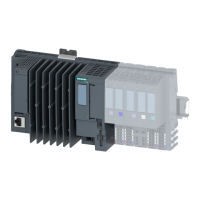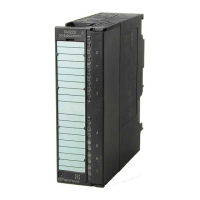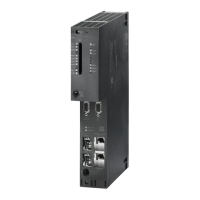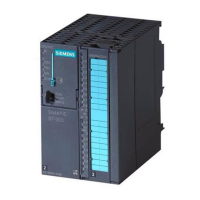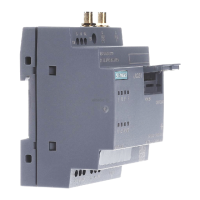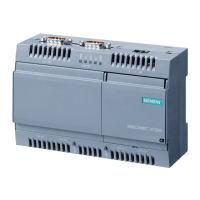Product overview
2.2 Hardware properties and firmware functions
CPU 1512C-1 PN (6ES7512-1CK01-0AB0)
24 Manual, 12/2017, A5E40898741-AA
RT (real time) RT prioritizes PROFINET IO telegrams over standard
telegrams. This ensures the required determinism in
the automation technology. In this process the data is
transferred via prioritized Ethernet telegrams.
PROFINET function manual
(http://support.automation.siemens.c
om/WW/view/en/49948856)
IRT (isochronous real
time)
A reserved bandwidth within the send clock is available
for IRT data. The reserved bandwidth ensures that the
IRT data can be transmitted in time-synchronized inter-
vals, unaffected by other high network loading (e.g.
TCP/IP communication or additional real time commu-
nication). Update times with maximum determinism can
be realized through IRT. Isochronous applications are
Isochronous mode The Isochronous mode system property acquires
measured values and process data and processes the
signals in a fixed system clock. Isochronous mode thus
contributes to high control quality and hence to greater
manufacturing precision. Isochronous mode reduces
possible fluctuations of the process reaction times to a
minimum. Time-assured processing makes higher
MRP (Media Redundancy
Protocol)
It is possible to establish redundant networks via the
Media Redundancy Protocol. Redundant transmission
links (ring topology) ensure that an alternative commu-
nication path is made available if a transmission link
fails. The PROFINET devices that are part of this re-
dundant network form an MRP domain.
RT operation is possible with the use of MRP.
MRPD (Media Redundan-
cy with Planned Duplica-
tion)
The advantage of the MRP extension MRPD is that, in
the event of a failure of a device or a line in the ring, all
other devices continue to be supplied with IO data
without interruption and with short update times.
MRPD is based on IRT and MRP. To realize media
redundancy with short update times, the PROFINET
devices participating in the ring send their data in both
directions. The devices receive this data at both ring
ports so that there is no reconfiguration time.
Shared device The "Shared device" function allows you to divide the
modules or submodules of an IO device up among
different IO controllers. Numerous IO controllers are
often used in larger or widely distributed systems.
Without the "Shared device" function, each I/O module
of an IO device is assigned to the same IO controller. If
sensors that are physically close to each other must
provide data to different IO controllers, several IO de-
vices are required. The "Shared device" function allows
the modules or submodules of an IO device to be di-
vided up among different IO controllers, thus allowing
flexible automation concepts. You can, for example,
combine I/O modules that are physically close to each
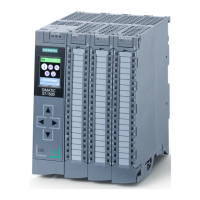
